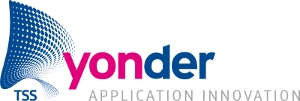Codecamp and ITSpark are organizing the first Codecamp event in Cluj-Napoca for this year. The event will take place in January 18th and will be a half day event. During the day we will have 4 MVPS that will talk about Windows Azure, Web Applications (HTML5), Code Metrics, Virtualization (VMware and Microsoft) and Public&Private (fake) cloud.
If you want to see the agenda and join the event I invite you to check the following link: www.codecamp-cluj-ian2014.eventbrite.com
Don’t forget that this is a FREE event offered by Codecamp and ITSpark with the support of our sponsors:
If you want to see the agenda and join the event I invite you to check the following link: www.codecamp-cluj-ian2014.eventbrite.com
Don’t forget that this is a FREE event offered by Codecamp and ITSpark with the support of our sponsors:
Agenda
| Title | Abstract | |
09:30-10:30
|
Building web applications with HTML 5 and related technologies
Mihai Tătăran
|
In today’s world, clients and users are more and more demanding when it comes to the applications they use. Whether we are talking about performance, fluid interface design, or availability on different screen sizes and devices, web applications need all these and even more. During this session we will explore how we can enrich the web user’s experience with technologies like: HTML5, web sockets (and Microsoft’s SignalR), and JavaScript libraries.
|
10:30-11:30
|
Managing code quality with SonarQube
Radu Vunvulea
|
In this session we will discover different metrics that can be used when we want to measure the code quality of a project. To calculate and interpret this metrics we will use SonarQube.
|
11:30-12:00
|
Break
| |
12:00-13:00
|
Comparing Microsoft Cloud with VMware Cloud
Tudor Damian
|
The session plans to review the key capabilities of the latest release of Hyper-V and see how they match with the latest release of VMware vSphere across four key areas: scalability and performance, security and multi-tenant environments.
|
13:00-14:00
|
Manage Private and Public Cloud Services with System Center 2012 R2
Adrian Stoian
|
How can we use System Center 2012 R2 Virtual Machine Manager and App Controller to manage private and public cloud infrastructures.
|


Comments
Post a Comment